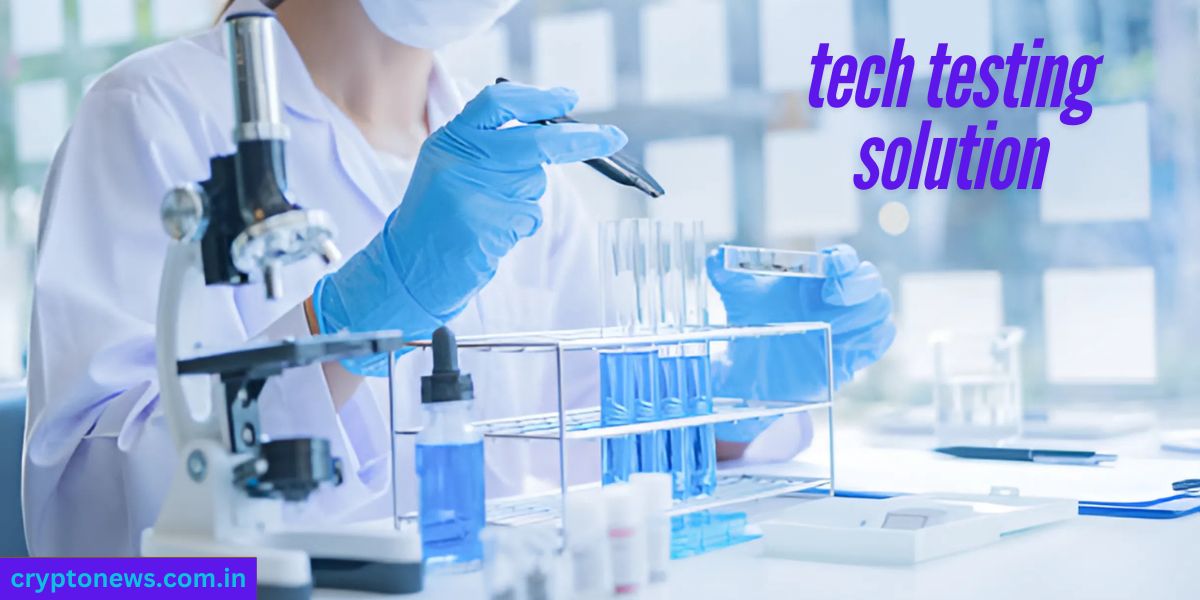In today’s rapidly evolving technological landscape, businesses across industries rely on tech testing solutions to ensure their software, applications, and systems perform optimally. With the increasing complexity of modern technology, organizations cannot afford to overlook the importance of thorough and efficient testing. This comprehensive guide delves deep into the nuances of tech testing solutions, exploring their critical role, various types, and best practices that ensure the success of any technological endeavor.
What are Tech Testing Solutions?
Tech testing solutions refer to a set of methodologies and tools designed to evaluate and ensure the quality and performance of technology products, services, and systems. These solutions are indispensable for identifying potential issues, bugs, and performance bottlenecks in software applications and hardware systems. By integrating testing into the development lifecycle, businesses can minimize risks, improve user experiences, and deliver high-quality products that meet customer expectations.
The Importance of Tech Testing Solutions
The significance of tech testing solutions cannot be overstated in today’s competitive market. Software and technology products are expected to meet stringent performance standards while being user-friendly and secure. Testing serves as the quality assurance (QA) backbone of any tech project, ensuring that:
- Software works as intended: Testing helps identify and fix issues before the software reaches end users.
- Security vulnerabilities are addressed: Cybersecurity is a top concern for all tech companies, and testing solutions ensure vulnerabilities are mitigated.
- Performance is optimized: Through stress testing and performance analysis, systems are refined to handle high loads efficiently.
- User experience is enhanced: Testing verifies that the software’s UI and UX are intuitive, making it easier for customers to interact with the product.
Types of Tech Testing Solutions
Tech testing solutions come in various forms, each serving a specific purpose in the development lifecycle. Below are some of the most widely used types of tech testing solutions:
1. Functional Testing
Functional testing focuses on verifying that the software behaves as expected based on its specifications. It ensures that all features and functions of the application are working correctly and meeting business requirements. Functional tests can be broken down into:
- Unit Testing: This is the first level of testing where individual components or functions of the software are tested.
- Integration Testing: Ensures that different modules or components of the software work together seamlessly.
- System Testing: Verifies the entire system’s functionality against the business requirements.
2. Non-Functional Testing
While functional testing checks whether the software works, non-functional testing focuses on how the software performs under certain conditions. This includes:
- Performance Testing: Assesses how the software performs under normal and peak loads.
- Security Testing: Identifies vulnerabilities that may be exploited by hackers, ensuring the software is protected from threats.
- Usability Testing: Focuses on how user-friendly and intuitive the software is, improving the overall user experience.
3. Automated Testing
With the increasing complexity of software and the need for faster testing, automated testing has become a vital part of the tech testing landscape. Automated tests are pre-scripted tests that run automatically without manual intervention, significantly reducing time and effort. It is particularly useful for repetitive tasks like regression testing, load testing, and large-scale testing scenarios.
4. Manual Testing
Despite the rise of automation, manual testing still plays a crucial role in identifying issues that require human judgment, such as usability concerns or UI inconsistencies. Manual testers interact with the software as end users would, identifying usability issues and gathering valuable feedback that might be missed by automated tools.
5. User Acceptance Testing (UAT)
User Acceptance Testing (UAT) is the final phase of testing, where end users validate the system to ensure it meets their needs and business requirements. UAT ensures that the software is ready for release and is aligned with user expectations and operational workflows.
Best Practices for Effective Tech Testing Solutions
Implementing a tech testing solution requires not only the right tools but also best practices that optimize the testing process and enhance the final product’s quality. Below are some of the best practices for achieving effective testing outcomes.
1. Establish Clear Testing Objectives
Before initiating any testing phase, it is essential to define clear testing objectives. These objectives should be aligned with business goals and project requirements. Whether it is improving performance, reducing bugs, or ensuring security, having a clear focus ensures that testing efforts are targeted and efficient.
2. Start Testing Early and Continuously
Testing should begin as early as possible in the development cycle. Early testing helps identify issues while they are easier to address and less costly to fix. Continuous testing throughout the development process ensures that new code changes don’t introduce new issues.
3. Automate Where Possible
Automating repetitive and time-consuming tasks, such as regression testing, can save significant time and resources. Automated tests can run frequently and at scale, ensuring that the system is always functioning as expected. However, it is essential to maintain a balance and incorporate manual testing for more subjective assessments.
4. Prioritize High-Risk Areas
Not all parts of the software require the same level of attention. Prioritize testing for high-risk areas such as core business functionality, security, and critical infrastructure. By focusing on the most vital aspects, businesses can ensure that their tech products meet performance standards and mitigate risks effectively.
5. Perform Load and Stress Testing
Load testing and stress testing are critical to ensure that the software can handle varying levels of traffic. Whether the application faces thousands of simultaneous users or a sudden surge in demand, these tests help validate that the system remains stable and responsive under high load conditions.
6. Involve Stakeholders in the Testing Process
Involving various stakeholders, including developers, product managers, and end users, ensures that testing aligns with business objectives and user needs. Collaborating with all relevant parties enables you to gather comprehensive feedback, improve usability, and enhance overall product quality.
Tech Testing Solutions and Future Trends
As technology continues to evolve, so do the methods and tools used for tech testing solutions. Some emerging trends shaping the future of tech testing include:
- AI and Machine Learning in Testing: Artificial intelligence (AI) and machine learning (ML) are being integrated into testing solutions to predict potential failures and optimize test cases. AI-driven testing can quickly identify issues, significantly reducing testing time.
- Cloud-Based Testing: Cloud computing offers the flexibility to run tests in various environments without the need for expensive hardware. Cloud-based testing provides scalability and efficiency, allowing teams to perform tests from anywhere in the world.
- Continuous Integration and Continuous Deployment (CI/CD): CI/CD practices are becoming essential for faster delivery cycles. Testing is an integral part of the CI/CD pipeline, ensuring that code is thoroughly tested before deployment.
Conclusion
Tech testing solutions are indispensable for ensuring the success of modern software applications and systems. With the increasing complexity of technologies, businesses must leverage a combination of automated, manual, and non-functional testing techniques to deliver high-quality, secure, and performant products. By adopting best practices, prioritizing critical areas, and keeping up with emerging trends, organizations can achieve optimal results from their tech testing solutions, fostering business growth and customer satisfaction.
For businesses looking to implement comprehensive tech testing strategies, it is crucial to work with experienced professionals who understand the nuances of testing. The future of tech testing is bright, with new tools and methodologies constantly improving the efficiency and effectiveness of the process.






